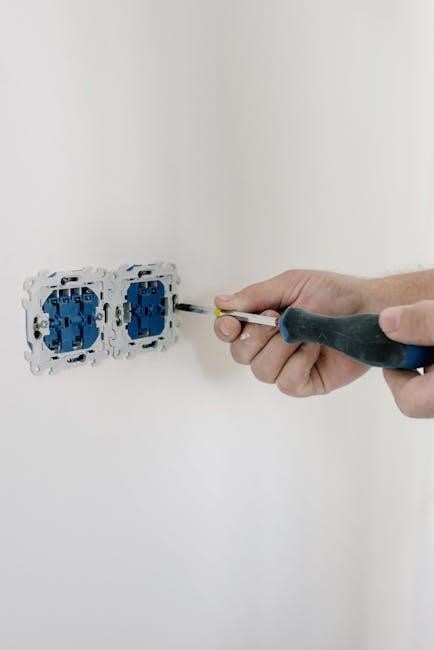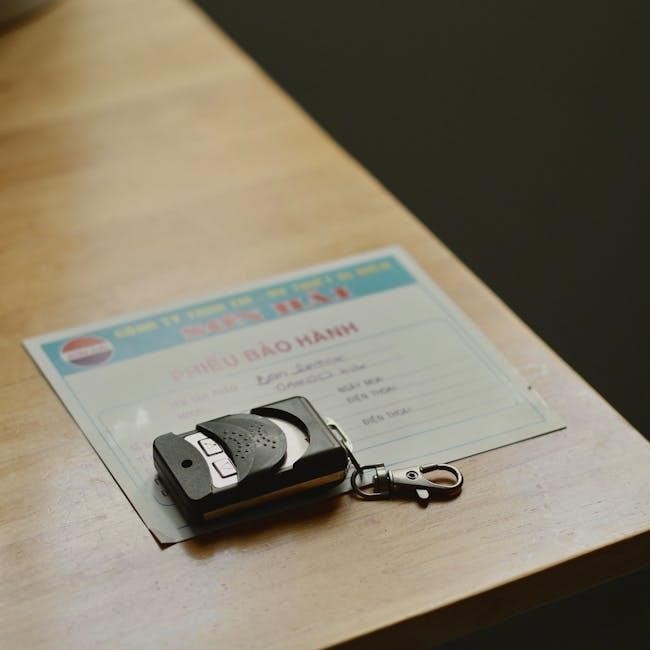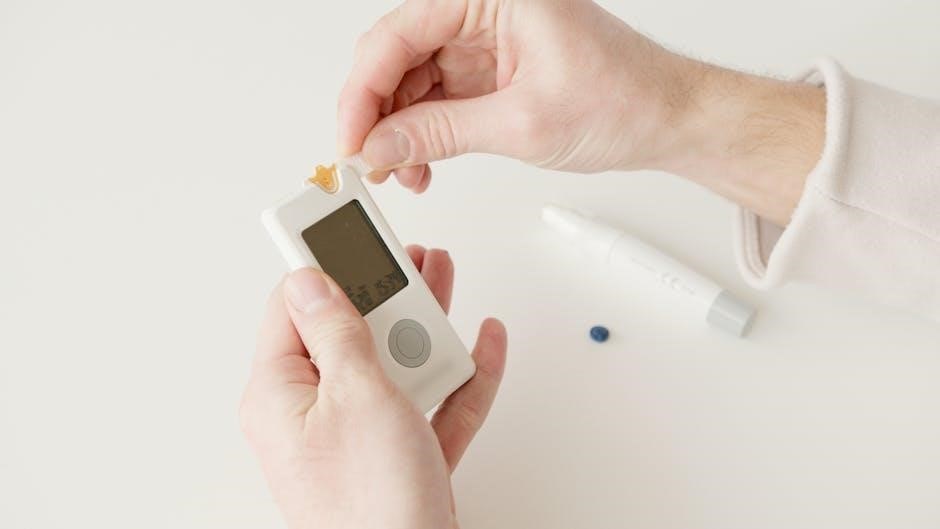Overview of GM Three-Speed Manual Transmissions
GM’s three-speed manual transmissions were widely used in various vehicles, offering a robust and simple design. These transmissions, including models from Saginaw, Muncie, and Borg-Warner, provided drivers with reliable performance across different applications, from passenger cars to light trucks.
General Motors (GM) implemented a variety of manual transmissions across its vehicle lineup, with three-speed units playing a significant role for many years. These transmissions were designed to offer a balance between fuel efficiency, durability, and cost-effectiveness, making them a popular choice for a wide range of cars and trucks. The three-speed manuals were a staple in GM vehicles from the mid-20th century through the 1980s, serving as a reliable option before the widespread adoption of four-speed and five-speed transmissions.
GM utilized several manufacturers for their three-speed manual transmissions, including their own Muncie division, as well as Saginaw and Borg-Warner. Each of these manufacturers brought unique designs and characteristics to the table, resulting in a diverse range of transmissions with varying strengths and weaknesses. Understanding the history and evolution of these transmissions is crucial for enthusiasts and mechanics working on classic GM vehicles. Identifying specific models and their applications requires knowledge of visual cues, casting numbers, and other identifying marks.
Common Applications in GM Vehicles
GM’s three-speed manual transmissions found extensive use in a wide array of vehicles, reflecting their versatility and cost-effectiveness. These transmissions were commonly installed in entry-level and mid-range cars, as well as light-duty trucks, providing a reliable and affordable drivetrain option. In the automotive sector, the three-speed manuals were prevalent in models like the Chevrolet Nova, Chevelle, and Camaro, particularly during the 1960s and 1970s. These transmissions offered a blend of performance and economy suitable for everyday driving.
Beyond passenger cars, GM also utilized three-speed manuals in their truck lines, including the Chevrolet C/K series and GMC counterparts. These transmissions were well-suited for the demands of light hauling and general utility, providing adequate torque and durability for various tasks. While four-speed and automatic transmissions eventually gained prominence, the three-speed manual remained a popular choice for budget-conscious buyers and those seeking a more engaging driving experience. Their widespread use underscores their importance in GM’s history.

Identification of GM Three-Speed Manual Transmissions
Identifying GM three-speed manual transmissions involves recognizing visual cues, casting numbers, and specific model characteristics. Distinguishing between Saginaw, Muncie, and Borg-Warner variants requires careful inspection of the transmission case, side cover, and internal components.
Visual Identification Techniques
Visually identifying GM three-speed manual transmissions often begins with examining the side cover. Saginaw transmissions typically feature a seven-bolt side cover with a distinct shape, while Muncie three-speeds, being rarer, might have unique casting marks. Borg-Warner models can be recognized by their curved bottom side cover, a key distinguishing feature.
Case construction also provides clues. Iron case transmissions are common, but the presence of an overdrive unit, indicated by a solenoid, governor, and separate shift lever on the extension housing, helps differentiate specific models. Counting the number of bolts on the side cover and noting any unique features can aid in narrowing down the possibilities.
Reference images of GM manual transmissions can further assist in visual identification, though caution is advised as some images might be mislabeled. Comparing the transmission’s physical characteristics with known examples and focusing on specific features like the side cover shape is essential for accurate identification.
Casting Numbers and Stampings
Identifying GM three-speed manual transmissions using casting numbers and stampings can be a complex task, given the wide variety of models and variations produced over the years. Casting numbers are typically found on the main case and side cover, providing a potential starting point for identification.
However, these numbers can be vague and hard to read, and even GM struggled to maintain accurate records of what each number corresponded to. Different sources suggest different numbers for similar transmissions, highlighting the inconsistency in relying solely on casting numbers. Stampings, including serial numbers and part identification codes, can offer additional clues, but their location and legibility can vary.
Due to the unreliability of casting numbers alone, it’s best to combine this method with visual identification techniques. Recording all available numbers and comparing them against known databases or reference materials can help narrow down the possibilities. However, visual cues, such as the shape of the side cover and overall case design, remain crucial for accurate identification.
Specific Models: Saginaw, Muncie, Borg-Warner
GM utilized three primary manufacturers for their three-speed manual transmissions: Saginaw, Muncie, and Borg-Warner. Each brand had distinct characteristics and applications. Saginaw transmissions were commonly found in non-performance and mid-range GM vehicles, known for their durable but less robust design. They were a common choice for a wide variety of cars.
Muncie three-speeds are less common, with a few models used in specific applications, including some performance cars from the late 1960s. The Muncie SM318 and SM319 are examples, with the latter featuring an optional Borg-Warner overdrive unit. These are rarer than the Saginaws.
Borg-Warner also supplied three-speed transmissions to GM, often identified by their curved bottom side covers. These were used in certain GM cars during the mid-1960s but are also considered relatively rare. Identifying which specific model you have requires careful examination of visual features, casting numbers, and potentially, internal components.

Saginaw Three-Speed Transmission
The Saginaw three-speed transmission was a common choice in General Motors vehicles. Known for its reliability and durability, it efficiently transferred engine power in a variety of mid-range performance automobiles from the 1960s through the 1980s.
Characteristics and Features
The Saginaw three-speed manual transmission, a staple in General Motors vehicles, boasts several distinctive characteristics. Its design emphasizes durability and reliability, making it a popular choice for various applications. A key feature is its synchronized gear engagement, allowing for smoother shifts during operation.
This transmission typically features a cast-iron case, contributing to its robust nature and ability to withstand demanding conditions. The Saginaw’s internal components are engineered for longevity, reducing the need for frequent maintenance. Moreover, its straightforward design simplifies repairs, making it a cost-effective option for many vehicle owners.
While not designed for high-performance applications like some Muncie models, the Saginaw excels in providing consistent and dependable performance for everyday driving. Its gear ratios are generally well-suited for a range of engine sizes, offering a balance between fuel efficiency and adequate acceleration. These characteristics solidified its place as a widely used and respected transmission in GM’s lineup.
Applications and Vehicle Compatibility
The Saginaw three-speed manual transmission found extensive use across a wide array of General Motors vehicles. Its versatility made it a suitable choice for both passenger cars and light-duty trucks. Commonly found in models from the 1960s through the 1980s, the Saginaw served as a reliable option for transferring engine power to the wheels.
Vehicles such as the Chevrolet Nova, Camaro (in certain non-performance configurations), and various GM trucks utilized the Saginaw three-speed. Its compatibility extended to smaller, more economical cars like the Vega, showcasing its adaptability to different engine sizes and vehicle weights. The Saginaw’s presence in both cars and trucks highlights its broad appeal and practical design.
The transmission’s robust construction allowed it to handle the demands of daily driving while providing adequate performance for a variety of applications. Although not typically associated with high-performance models, the Saginaw delivered a dependable and cost-effective solution for numerous GM vehicles, contributing to its widespread adoption and longevity in the automotive market.

Muncie Three-Speed Transmission
The Muncie three-speed transmission, though less common than the Saginaw, appeared in some GM vehicles, particularly in the late 1960s and early 1970s. These units are considered rarer and often found in specific car models or truck applications.
Rarity and Specific Applications
The Muncie three-speed manual transmissions, specifically the M62 and M64 models, hold a unique place in GM’s history due to their relative scarcity compared to other three-speed options like the Saginaw. While Saginaw transmissions were widely implemented across a broad range of vehicles, the Muncie three-speeds were often designated for particular applications or model years, increasing their rarity among enthusiasts and restorers.
Notably, the Muncie SM318 transmission saw use from 1954 through 1969 in both passenger cars and trucks. The SM319 model, which is physically identical to the SM318, featured an added Borg-Warner overdrive unit. These Muncie transmissions were not as universally employed as the Saginaws, making them less frequently encountered in common GM vehicles of the era.
Consequently, identifying a Muncie three-speed often requires careful examination of casting numbers and other distinguishing features, as they were not as ubiquitous in GM’s production lineup. Their specific applications were usually in models where a stronger or more specialized transmission was desired, but without opting for a four-speed.

Borg-Warner Three-Speed Transmission
Borg-Warner three-speed transmissions were utilized in some GM vehicles, particularly in the mid-1960s. These transmissions are relatively rare and can be identified by their curved bottom side cover. They represent a distinct alternative to Saginaw and Muncie models.
Distinguishing Features and Identification
Identifying a Borg-Warner three-speed transmission involves recognizing its unique features. A key distinguishing characteristic is the curved shape of its bottom side cover, setting it apart from the more common Saginaw and Muncie transmissions. While relatively rare in GM applications, these transmissions primarily appeared in the mid-1960s.
Visual inspection is crucial, focusing on the side cover’s curvature. Unlike the flat, rectangular side covers found on Saginaw transmissions, the Borg-Warner unit exhibits a noticeable curve. Casting numbers can provide further clues, although visual identification of the curved side cover often suffices. Comparing reference images can also help confirm identification.
Due to their rarity, specific applications and detailed specifications for Borg-Warner three-speed transmissions in GM vehicles can be harder to find. Consulting specialized transmission guides or forums dedicated to classic GM vehicles can offer more in-depth information and assist in accurate identification, especially if casting numbers are difficult to read.

























